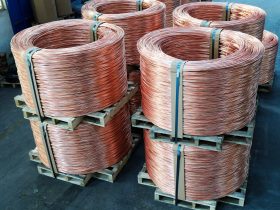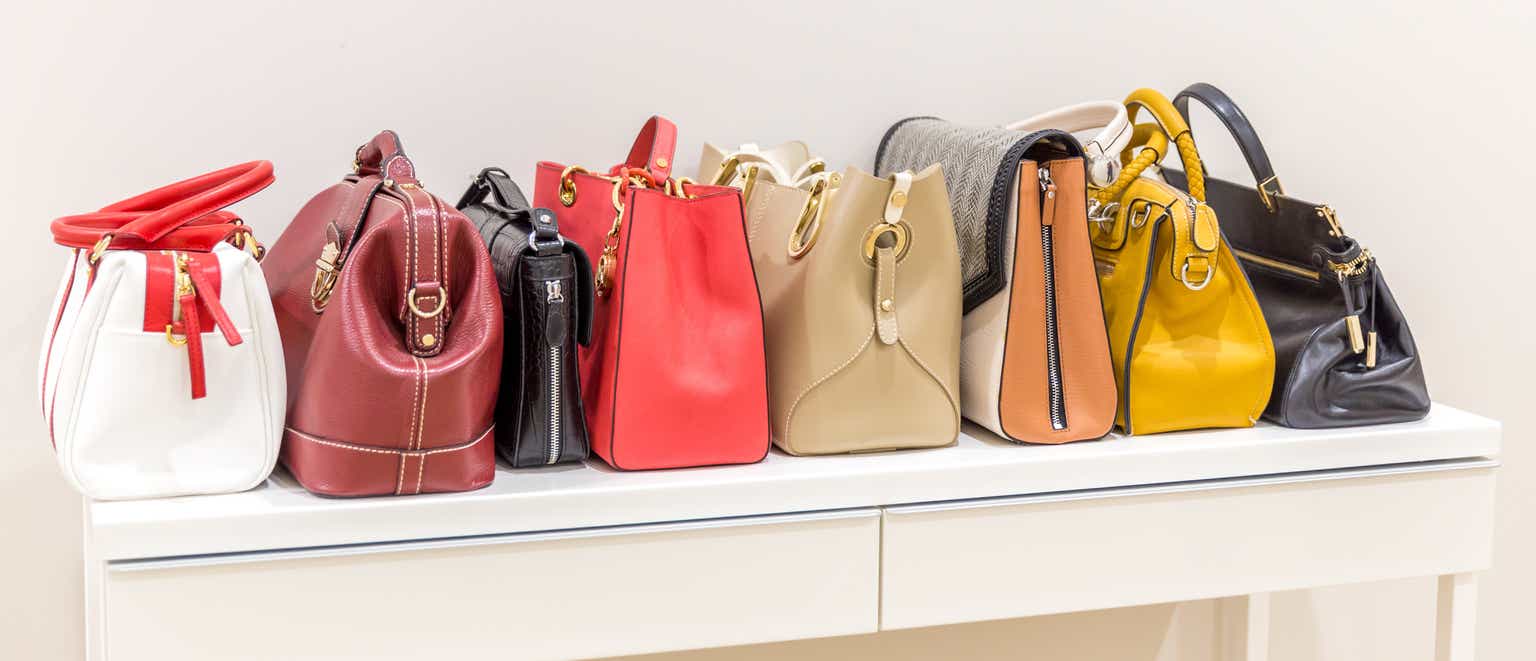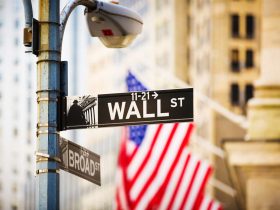Overview
Capri Holdings (NYSE:CPRI), which owns the Michael Kors, Jimmy Choo, and Versace brands, represents a great investment at today’s price of $33.55 per share. In August 2023, Tapestry (TPR), which owns the Coach, Kate Spade, and Stuart Weitzman brands, made an offer to acquire CPRI for $57 per share, or a 70% premium to Capri’s current share price. While the FTC has sued to block this merger (more on this later), even if the deal does not go through, Capri’s current share price offers meaningful downside protection. Given the valuation multiples iconic global brands have been sold for historically, Jimmy Choo and Versace could be sold for $3-$4 billion conservatively. This would leave the remaining Michael Kors business, though in decline (more on this too), valued at a very low multiple. I believe the FTC’s case is weak and will walk through several reasons why, however, let’s take care of the downside first.
At $33.55/share CPRI has a market value of ~$3.93 billion and an enterprise value of $5.45 billion. Over the last 12 months, Michael Kors, Jimmy Choo, and Versace generated revenue of $3.52 billion, $618 million, and $1.03 billion, respectively.
While selling Jimmy Choo and Versace may seem like mere speculation, Capri’s CEO, John Idol, explored this option while he also engaged in merger talks with Tapestry. Additionally, John Idol and Capri’s CFO, Thomas Edwards, spent ~$10 million in March 2023 acquiring Capri shares at ~$41/share. In the past, Idol has been a large seller of stock at much higher prices, only purchasing shares a couple of other times at opportunistic prices in 2019. His trades have proven timely in the past, as his sales were well-timed and so were his purchases two years later.
Downside Scenario
Jimmy Choo valuation
In November 2017, Capri acquired the women’s luxury fashion brand, Jimmy Choo, for $1.35 billion. A great comp for this business is Christian Louboutin, another global iconic fashion brand, that sells primarily shoes. In 2021 Exor bought a 24% stake in Louboutin, which valued the business at 2.26 billion Euros. At the time of the acquisition, Exor stated that Christian Louboutin was targeting revenue of 1 billion Euros. While it is yet to reach that goal today, today, Exor values the entire business at Louboutin at 2.92 billion Euros. While Louboutin’s revenue is not disclosed, we do know that revenue is below 1 billion Euros and therefore Exor values it today at least at ~3x revenue. Valuing Jimmy Choo at a much lower multiple of 1.5x – 2.0x revenue would yield a valuation of ~$900 million – $1.2 billion.
Versace valuation
In December 2018 Capri acquired Italian global fashion brand, Versace, for $2.1 billion. Unlike Jimmy Choo, Versace has a more diverse product line and caters to both men and women. Historically, luxury fashion companies such as Chanel, Estee Lauder, Kering, LVMH, and Prada have been active acquirers of luxury brands, such as Versace, and they have been willing to pay up. Revenue multiples paid by these fashion houses for brands like Bulgari, Christian Dior Couture, Loro Piana, Tiffany, Tom Ford, and Valentino have ranged from 3x – 4x revenue, with some going for even higher. A valuation of 2x-3x revenue would yield a valuation of ~$2.1 – ~$3.1 billion.
Michael Kors and sum-of-the-parts valuation
Combined, Jimmy Choo and Versace could be worth ~$3 billion – ~$4.3 billion, leaving the remaining Michael Kors brand valued at ~$1.1 billion – ~$2.5 billion. Although Michael Kors is in decline, it is Capri’s primary cash generator. Over the last 12 months, Michael Kors EBITDA was ~$441 million, when calculating EBITDA by segment and including all corporate expenses, even for Jimmy Choo and Versace. This implies a valuation of 2.5x – 5.6x EBITDA and 0.3x – 0.7x revenue for Michael Kors. Assuming Michael Kors was valued at just 5.0x EBITDA, that would imply a valuation of ~$2.2 billion. Adding up all the Capri brands would equal an enterprise value of ~$5.2 billion – ~$6.5 billion. Subtracting out net debt of $1.5 billion would equal a market value of ~$3.7 billion – ~$5.0 billion and a share price of ~$31.34 – ~$42.79.
The FTC has a weak case
The FTC has sued to block the merger on the grounds that it would create a monopoly in the accessible luxury handbag market in the U.S. Below are several rebuttals and arguments for why I think the FTC has a weak case.
How does the FTC explain the fact that Coach raised prices AND gained market share over Michael Kors, despite Michael Kors taking “a different path” and “using discounts to undercut competitors”? Quotes are the FTC’s.
This challenges the crux of the FTC’s argument that higher prices would harm consumers. Price may not be the primary basis for competition in the accessible luxury market; consumers likely value other attributes, such as brand image and design.
By doing exactly what the FTC deemed anticompetitive—raising prices, cutting discounts and promotions, and reducing wholesale—Coach successfully turned around its brand.
Revenue data:
From 2016 through 2023, Michael Kors’ Americas revenue declined by approximately 25%, while Coach’s North America revenue increased by about 27% and Kate Spade’s declined by around 1%.
While Michael Kors does not provide revenue for U.S. handbags, its total accessories (Americas and International) revenue, where handbags would be included, has fallen over 22% during that timeframe. With the U.S. business underperforming the international business, I would estimate its U.S. handbag business declined ~30% from 2016-2023. On the other hand, Coach and Kate Spade saw their total (North America and International) women’s handbag revenue increase 2% and 3%, respectively. While data on U.S. men’s and women’s handbag revenue is not provided, based on the North America business growing faster for Coach and slower for Kate Spade, I would estimate Coach’s U.S. handbag revenue grew around 5%-10%, while Kate Spade’s was about flat.
A significant percentage (estimated at 50%) of Michael Kors handbags are made from synthetic materials like PVC and polyurethane. The FTC needs to either exclude these non-accessible luxury handbags from its market share calculations or include mass-market handbags in its denominator.
A quick check online on various department store websites and Michael Kors’ website, as well as visits to several off-price stores, show how prevalent non-leather Michael Kors bags are. My 50% estimate does not even include their outlet stores, which would likely only raise my 50% estimate further. In order to offer lower priced handbags at its outlet stores, it is likely that a greater percentage of its handbags are comprised of synthetic materials.
The FTC’s complaint gets peculiar when it tries to articulate the quality and craftsmanship of Coach and Michael Kors handbags. It appears the FTC cherry-picked marketing quotes from a specific handbag or two without stating their sources, piecing together what seem to be marketing catchphrases
Page 19 of the FTC’s complaint: “‘Accessible luxury’ handbags boast quality materials and craftsmanship. Coach states that it works with only the finest leather hides, and its handbags may require more than 100 steps to make, including ‘up to 90 skilled artisans working together to assemble as many as 200 pieces.’ And Michael Kors specifically uses a ‘handcrafted capsule,’ ‘woven leather,’ and ‘artisanal stitch’ for many of its handbags, ‘making this a truly artisanal technique’ that demonstrates ‘delicate craftsmanship and artisanal skill.’ These qualities separate ‘accessible luxury’ from mass-market handbags, which are often composed of man-made materials such as polyurethane and nylon and produced in bulk in China.” (emphasis added)
Michael Kors participates in the lower end of the accessible luxury price range, with an estimated handbag average unit retail (AUR) of ~$150. Coach has an AUR of over $300, according to the FTC, so likely 2x Michael Kors’. The (competition) lines get blurry at the lower end of accessible luxury, where Michael Kors participates, and the higher end of mass-market, where companies like Guess participate. How can the FTC argue, in the same vein that raising prices will harm consumers, that a $114 Michael Kors tote bag at Macy’s, made from synthetic materials, is in the same relevant market as a $315 Coach leather shoulder bag, but not a $71 Guess handbag, also made from synthetic materials?
The FTC does not quote a single competitor, supplier, or customer in its complaint. In its barriers to entry example, it provides a couple of quotes from Rebecca Minkoff. However, those quotes came from a 2021 podcast interview she did and not from her directly.
Additionally, the FTC, in my opinion, took the quotes completely out of context. Minkoff was in the middle of discussing how people who want to start a brand can do so but they don’t have to focus on growing big. Instead, they should focus on being profitable.
Why isn’t Rebecca Minkoff’s story a prime example of a competitive and dynamic market? Her rapid growth and subsequent slowdown are common and what fashion brands commonly experience, due to competition.
The FTC claims that Rebecca Minkoff launched her brand in 2001. This is incorrect. She designed her first handbag, the “Morning After Bag,” in 2005.
Likely due to not actually interviewing Rebecca Minkoff, the FTC wrongly believes she struggled for a decade and half trying to crack the accessible luxury handbag market. In reality, her “Morning After Bag” became an instant success. They quickly sold out and were in department stores within a few years, at most. In 2009, she introduced her first read-to-wear collection.
A little side note, in her 2021 podcast, she states, which the FTC quotes, “We’ve been doing it for 15 years…” Had the FTC done some basic math, it would have realized that 15 years ago in 2021 was not 2001.
The secondhand (resale) market for luxury handbags is significant and growing, and it doesn’t seem the FTC is factoring this in their market share calculations.
You could argue that the resale market is literally the definition of accessible luxury. According to Bain, in 2023 over $49 billion secondhand luxury products were sold worldwide, doubling in just four years. The Bain report says that the resale market is equivalent to 12% of the value of the market for new personal luxury goods. Although specific data on U.S. handbags is not provided, it is clear that the resale market is growing in importance and taking share away from companies like Coach, Kate Spade, and Michael Kors. Sites like TheRealReal sell true luxury handbags from brands like Louis Vuitton, YSL, and Gucci in the $100-$1,000 and $100-$500 price range.
The FTC is ignoring the impact of the counterfeit handbag market.
With consumers priced out of acquiring true luxury handbags, many (and you probably know some) have resorted to buying handbag “fakes.” These fakes have also gotten better at resembling the actual luxury brand. In November 2023 alone, federal agents seized 219,000 counterfeit bags and other luxury items, that would have retailed for $1.03 billion. This is not an insignificant amount, and this is just what was actually seized in one month.
In what world does an industry have high barriers to entry, while also having hundreds of companies, with thousands of substitutable products at price points along practically every $5 dollar increment from $100-$1,000? Furthermore, in what high-barrier-to-entry industry can a company grow through savvy use of social media platforms like Instagram or through celebrity endorsements?
The rapid success of brands like Kurt Geiger, Staud, Mansur Gavriel, and many others, further shatters the FTC’s barriers to entry claim.
No one in the fashion industry will agree with the FTC’s assessment that Tapestry’s actions are anticompetitive, because it defies logic and history in this industry. No journalist, no industry insider, and not even Nordstrom. Price cutting and ubiquity are the “kisses of death” for fashion brands, especially those that are considered accessible luxury and not mass-market.
What Tapestry wants to do – raise prices and reduce wholesale for Michael Kors – is procompetitive. Discounting and ubiquity are the exact things that destroyed the Michael Kors brand. Raising prices and creating exclusivity were the exact things that turned the Coach brand around.
Tapestry has a playbook to turn around Michael Kors. Elevate the brand by raising prices, reduce wholesale presence, improve product design, differentiate the brand, and improve marketing. It successfully turned around Coach, fixing the same problems that are plaguing Michael Kors today.
Insiders and journalists predicted the fall of Michael Kors in 2014 and 2015 due to the very same things the FTC would prefer Michael Kors to continue doing.
Additionally, discounting and ubiquity led Nordstrom to stop carrying Michael Kors handbags several years ago, which continues to today. At the stores I visited, no Michael Kors handbags were carried, and associates told me they stopped carrying them. Online, you will only see four handbags, and they are all priced below $100.
Despite Tapestry’s intentions to reduce Michael Kors’ wholesale presence, which by default would open “shelf-space” to hundreds of other brands to sell there, the FTC, in my opinion, prefers to maintain the status quo. It seems they prefer that Michael Kors continue to occupy a significant portion of the shelf-space at wholesale, blocking access to the many other brands that would like to enter or grow their sales in that channel.
Michael Kors has a better chance of being successfully revitalized under Tapestry than under Capri
Tapestry has other cash flow streams, such as from Coach, Kate Spade, and Stuart Weitzman, to fund the Michael Kors turnaround. Conversely, Capri would have to rely on Jimmy Choo and Versace, which are currently in their own growth phases and likely not generating significant free cash flow.
Conclusion
Although the FTC is trying to block the Tapestry/Capri merger, I believe it has a strong chance of going through due to the arguments presented above. If the companies win in court, Capri should rise to the $57/share acquisition offer, or 70%. If the court decides to block the acquisition or the deal falls apart for whatever reason, at Capri’s current share price, there is limited downside as Capri’s brands could be monetized.
Read the full article here








Leave a Reply